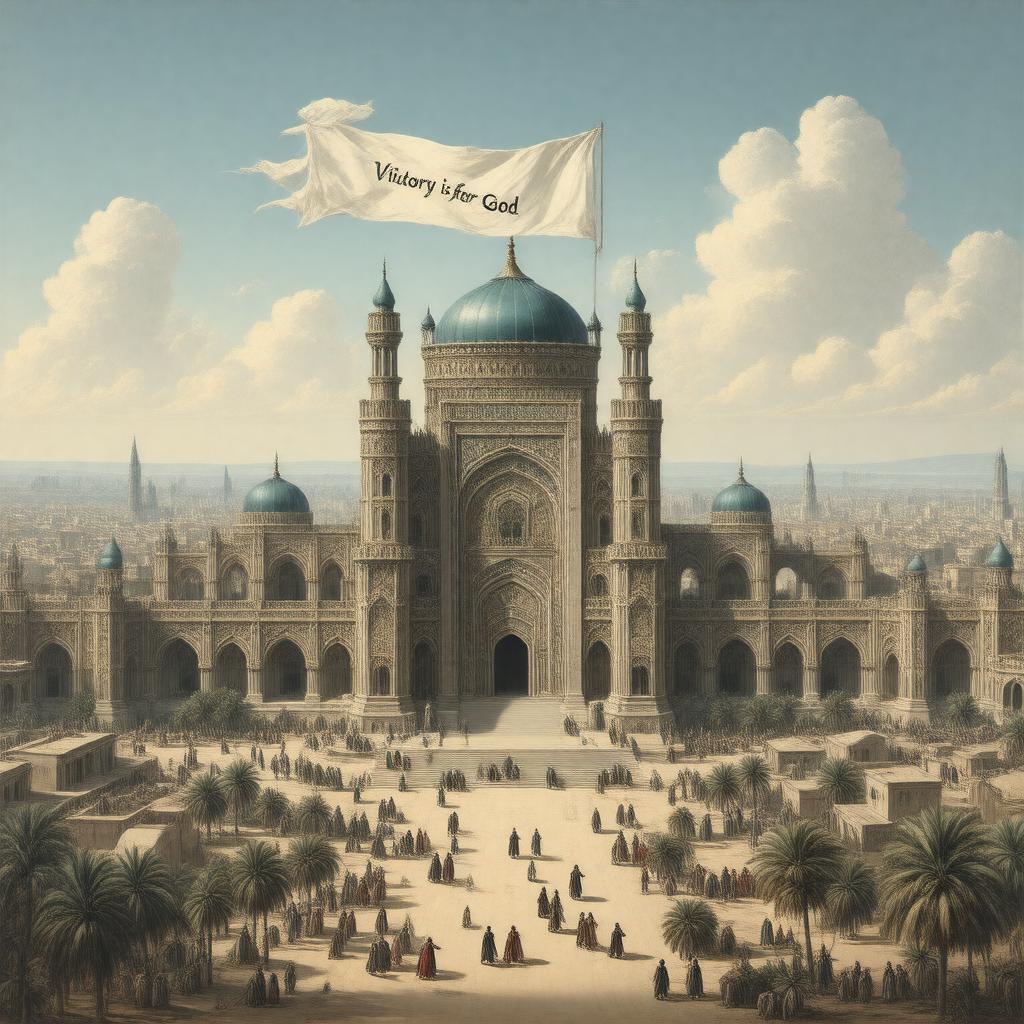Prompt
"An illustration of a majestic Islamic architectural style palace with intricate geometric patterns, arches, and domes, set against a backdrop of the Cairo cityscape during the 10th century, with a prominent white banner bearing the Fatimid dynasty's motto 'Victory is for God' flying high, symbolizing the Fatimid dynasty at its peak, with notable landmarks such as Al-Azhar Mosque and the Mosque of Al-Aqmar in the distance, under a clear blue sky with a few palm trees and bustling markets in the foreground."

